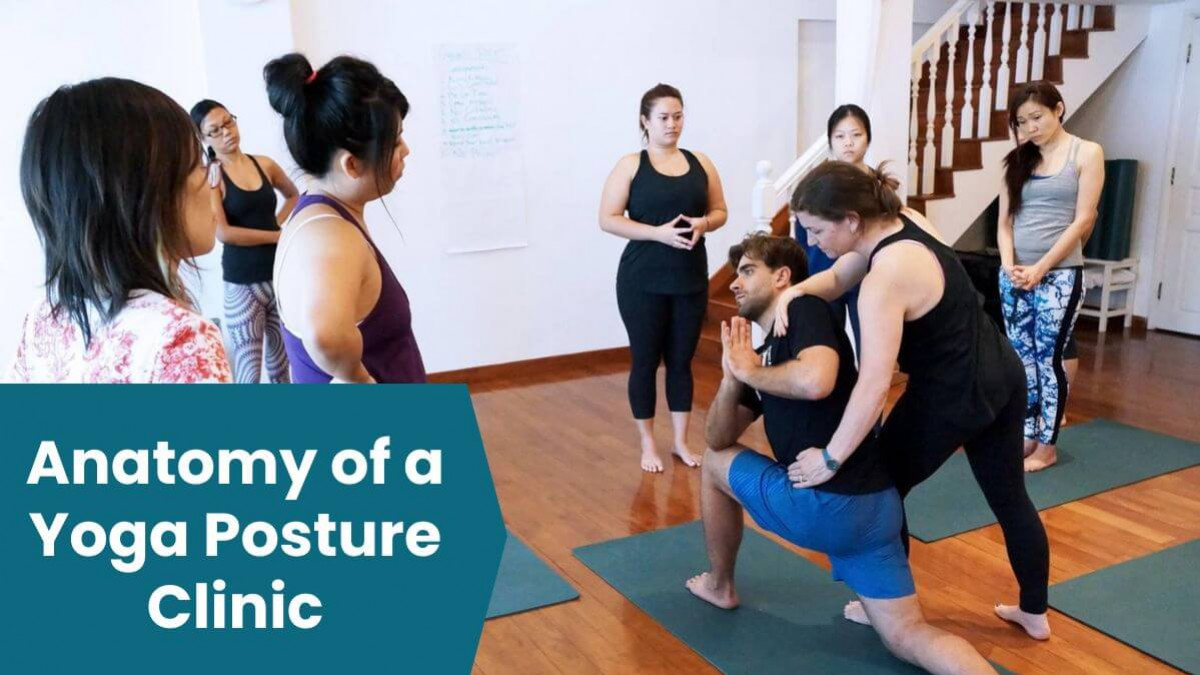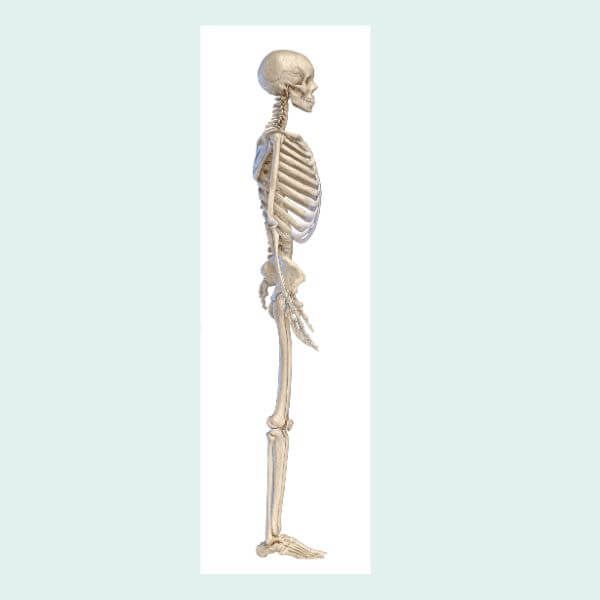The Anatomy of a Yoga Posture Clinic

A guide for understanding and leading yoga posture clinics.
.
If you know me, you know by now that I love anatomy. That is, I love breaking down the whole to understand the parts and then put them all together again with a better understanding of the whole. In this week's article, we will look at how to break down any yoga posture to better understand it's parts. If you can break down a posture and then see it all together, you can master the art and science of teaching any yoga posture to any student!
.
Think of this as a guide to breaking down any yoga posture for an exciting and educational posture clinic!
.

The Intention of the Yoga Posture
First and foremost, address the intention behind each yoga posture. Before you even step onto your mat or call out the name of the posture, it's essential to know why you're practicing or teaching a particular posture. Is it to build strength, increase flexibility, find balance, or cultivate a sense of calm? Understanding the intention helps you tailor your cues and sequencing to meet the needs of your students. The intention is like the North Star guiding your practice and teaching.
.

Category of the Yoga Posture
Yoga postures can be grouped into various categories or families, such as standing poses, seated poses, twists, backbends, inversions, and more. Categorizing postures helps you create balanced and intelligent sequences and identify their primary benefits. For instance, a wheel pose falls under the category of backbends, which are excellent for elongating the hip flexors and exciting the nervous system. Knowing the category allows you to weave postures seamlessly into your class.
.

Basic Shape of the Yoga Posture
Every yoga posture has a fundamental shape or structure that defines it. Think of the basic shape as the blueprint of the posture. For example, in Downward-Facing Dog, the basic shape is an inverted 'V'; with the hands shoulder-width apart and facing forward; the feet hip-width apart and toes facing forward, and the tailbone reaching up towards the ceiling. Understanding the basic shape helps you convey the essence of the posture to your students, making it easier for them to grasp, especially if they are newer students.
.

Common Sub-Optimal Postural Defaults of the Posture
Now, let's address a critical aspect: recognizing common sub-optimal postural defaults in each posture. These are the tendencies that students may exhibit due to physical limitations, poor alignment habits, or simply not understanding the form. In Downward-Facing Dog, it's common to see rounded backs, lifted heels, or collapsed wrists. Identifying these defaults empowers you to offer precise cues and adjustments to guide your students toward a safer and more effective and more empowering practice.
.

Possibilities (Adaptations & Variations) of the Posture
Yoga is inclusive, and not every student will fit into the same mold for each posture. Understanding the possibilities within a posture is crucial for accommodating various body types, abilities, and levels of experience. For instance, in a forward fold, some students may need to bend their knees, use props, or practice a gentler variation. Other students may desire a more challenging posture to keep them engaged in their practice. Offering adaptations and variations ensures that everyone can benefit from the practice while respecting their unique bodies.
.

Key Anatomy of the Posture
Now, let's dive into the anatomy of the posture. If you are not already confident with your yoga anatomy, or want to learn a bit more, The Foundations of Yoga Anatomy is what you need. Enrolling in this course is your key to unlocking a deeper understanding of the human body's mechanics in the context of yoga. As a yoga teacher, this course equips you with the knowledge and tools to dissect postures with precision, offering your students safer and more effective guidance. By delving into the intricacies of anatomy, you'll not only enhance your own practice but also become a more skillful and confident yoga teacher.
There are several ways to approach the key anatomical components of a posture. In the Yoga Anatomy School's Yoga Posture Clinic Series, I use a consistent pattern for each posture so that students can more easily learn. I start with the feet and legs as the feet most often serve as part or all of the foundation of the posture. I then address the pelvis and spine and end with the arms and hands. The order in which you address the parts of the body may vary. What is important is how you address the body.
For each part of the body address the following:
- What position is the joint in?
- What muscles are lengthening?
- What muscles are shortening?
Let's look at the ankles in downward facing dog as an example: The ankles are flexed (dorsiflexion to be specific). The calves muscles (gastrocnemius and soleus) are lengthened. The front shin muscle (anterior tibialis) is shortening. There are, of course, more anatomical details to be studied, but this much anatomy for a given body part is a really good start for a yoga posture clinic.
.

Alignment of the Posture
Now that we've dissected the key anatomy, it's time to put it all together and examine the alignment of the posture. While anatomy and alignment are directly related, they are actually different from each other. Anatomy looks at the parts of the body including the muscles and what they are doing.
Alignment is what is most important for yoga teachers to understand.
If you do not understand the alignment of a posture, you will not be able to give your students clear cues. Alignment cues guide your students into the posture's most efficient and safest form of the pose. They encourage students to mindfully connect to their physical body. You might say alignment cues are the essential component of teaching yoga, and certainly a very important part of any yoga posture clinic.
In the Foundations of Yoga Anatomy course, you will learn a simple and tested method of learning alignment. This system is called Optimal Postural Alignment (OPA). The best part is that you only need to learn the alignment of one posture! With an understanding of basic anatomy and sixteen alignment cues, you will have confidence teaching and even be able to create and lead your own yoga posture clinics!
.
Conclusion
In essence, a yoga posture clinic is your opportunity to empower yourself as a teacher and your students as practitioners. By understanding the intention, category, basic shape, common defaults, possibilities, key anatomy, and the Optimal Postural Alignment of each pose, you can better understand your sequences and even create your own yoga posture clinics!
This course is now available as a stand alone class...meaning you don't have to be a member to access the class!

Already took the Foundations Course? Great News! The Yoga Anatomy School is now rolling out the Yoga Posture Clinic Series! First posture up is the ever common downward facing dog! Each posture clinic will follow the outline described in this article and are developed to ensure yoga teachers can understand the postures and teach with authority!


Categories: : Effective Teaching Techniques, Posture Alignment, Yoga Anatomy
 Trish Corley
Trish Corley 
